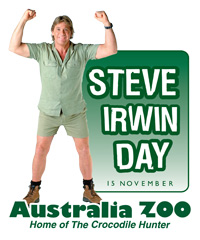This Tuesday, 15 November, is the annually celebration of the life of Steve Irwin. Like him or not, you cannot deny that this man brought the plight of wildlife conservation into more than 150 million living rooms around the world. Carrying on that tradition, the aptly named Steve Irwin Day continues Steve’s mission to fight for wildlife conservation and habitat preservation. In addition, the day reminds us that one person can make a huge difference. I remember the first time I saw Steve Irwin on television. Being raised on the stylings of Sir David Attenborough, Steve was unlike anything I …
Crikey! It’s Steve Irwin Day!


